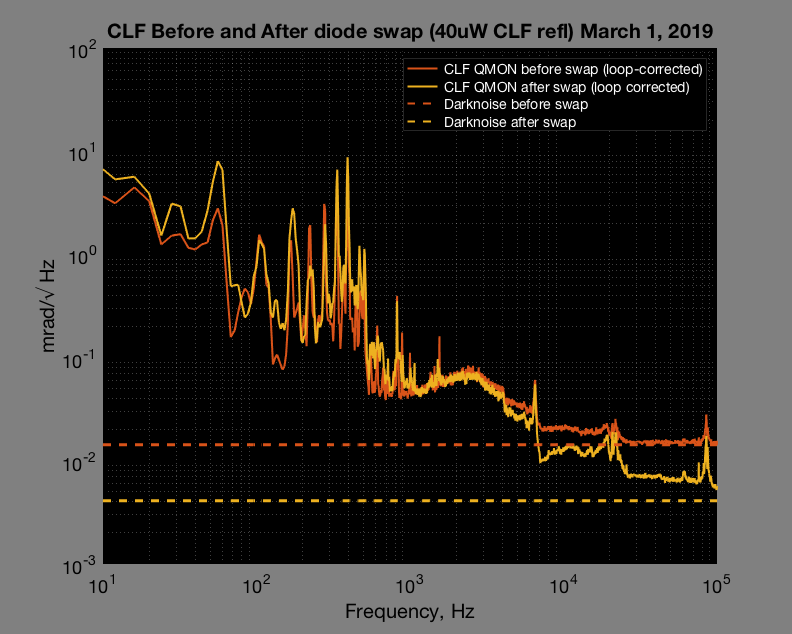Peter F., Rich A., Daniel, Nutsinee
The dark noise is factor of 3.75 better with the new diode. With this we can crank up the loop UGF as high as we could to squash the acoustic noise (and some of the stuff above 1kHz). We can also try operating at lower CLF power. With both of these things we should gain a bit more squeezing.
Compared to the old diode we gained 8dB of RF power. More information about the new diode can be found in alog47171 and alog47196.
Also attached RF beat note and the sine wave from the IQ demod board RF mon (23dB attenuated).

Attached the same plot but with sensing noise. Using a shot noise measurement from the light bulb and a DC transimpedance of 10kOhms we got a RF transimpedance of 1.87kOhms for the new detector. For the old detector I got 678.8 Ohms transimpedance. This factor of ~3 seems to explain then amount of RF power we get before and after the swap.
A factor of 25 (RF amp) *sqrt(2) (SN folded in IQdemod) * 5(IQdemod board gain) * 10(diode gain) have been included for both cases.

In the above plot it seems that the measured noise is below the sensing noise at 100kHz. This effect is due to the ~100kHz bandwidth of the photodiode (Q~30 at 6.25MHz).
Removing the diode gain, we have an overall RF transimpedance gain of 6.8kOhm and 18.7kOhm for the old and new photodiode, respectively. The second stage gains are 50 and 5, respectively. This leaves a gain of 140Ohm and 3.7kOhm in the first stage, respectively. So, we may expect an improvement of the dark noise by ~5.




